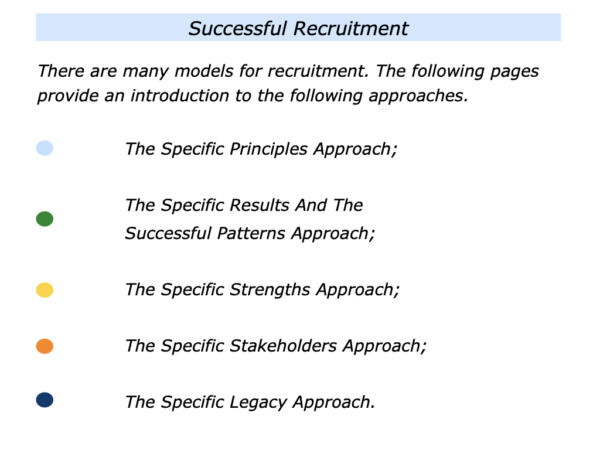
Great organisations aim to implement the right strategy with the right people in the right way. They therefore employ people who aim:
To follow the organisation’s principles … To be positive and professional … To make their best contribution towards achieving the organisation’s picture of success.
There are many ways to look for certain qualities in people. One approach is to focus on whether they have the right attitude and ability to achieve the desired results.
The first step is to make sure that people who are applying for a role have the required attitude. How to make this happen? Some companies set the tone in the way they write the job advert.
Here is one approach that they may use. They do, of course, adapt this in their own ways.
The Must Have Qualities
We look for people who have a positive attitude and want to use their strengths to help other people to achieve success.
It is also important for them to want:
To make a positive contribution towards helping our company to achieve its goals;
To do superb work, provide great service and keep developing;
To help our customers, colleagues and the company to achieve success.
This approach sets the tone and is a preface to describing the outcomes to be delivered in a particular role. It ensures that people know some of the Dos – the behaviour that are encouraged – in the culture.
Bearing this in mind, let explore some of the many models for recruitment. The following pages describe some of the approaches that are more likely to increase the chances of success.
These approaches also come with a caveat. It can be vital to build in a period of probation. You will then be more able to see whether a person actually behaves in a way that contributes to the organisation.
The Specific Principles Approach
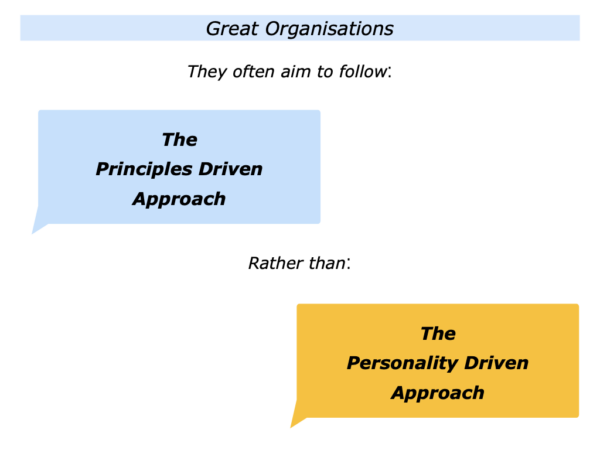
Great organisations sometimes start by being personality driven by a strong founder or leadership team. They may only thrive in the long-term, however, if they become principles driven.
Such organisations often focus on clarifying and communicating their principles. These provide a guiding compass. People can then use their personalities to follow these principles in their work.
Bearing this in mind, such organisations aim to recruit people who want to apply their strengths to follow the principles. Some take the following approach before interviewing a person.
The organisation sends the candidate its culture handbook. This describes:
The specific principles it encourages people to follow on the way towards achieving the organisation’s goals;
The specific reasons for following these principles on the way towards achieving the organisation’s goals
The specific examples of how people have translated these principles into action on the way towards achieving the organisation’s goals.
The organisation then invites the candidate do some prework which they present at the interview. They are asked:
To describe a specific situation in the past when they have aimed to follow some of these principles in their personal or professional lives;
To describe the specific things they did to translate some of these principles into action;
To look ahead and describe the specific things they would aim to do to follow some of these principles in their potential work for the organisation.
This sounds like a lot of work and it is. When appropriate, however, the candidates are given lots of support and suggestions regarding how to complete the task.
Great organisation take these steps, however, to increase the chances of recruiting the right people. They then encourage them to keep following the principles and work towards the organisation’s picture of success.
The Specific Results And The
Successful Patterns Approach
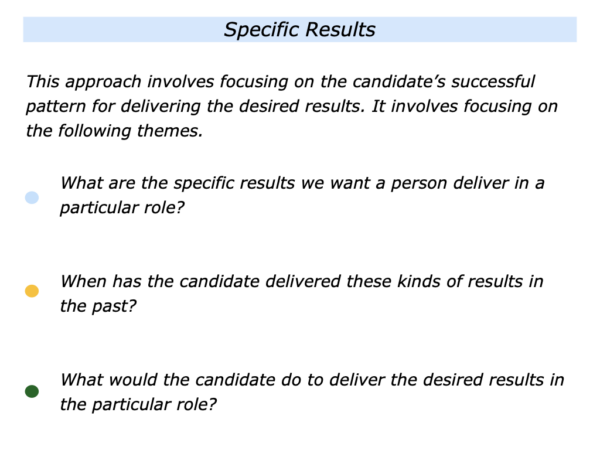
This approach involves clarifying the results to be delivered in a particular role and whether a person has a successful pattern of delivering such results. It involves focusing on the following themes.
The specific results that you want a person – such as an A Player – to deliver in a particular role. For example: We want them: a) to .. b) to … c) to … Try to be as specific as possible.
The candidate’s successful pattern in the past for delivering these kinds of results. It is useful to focus on what they did right then – the principles they followed – to deliver the results.
The specific things that the candidate would actually do to deliver the desired results in the particular role. It is important to explore this theme with them.
Imagine that you want to follow elements of this approach. There are different ways of advertising a particular role.
Some organisations still list all the tasks that the person should be good at doing. Another route is to focus on the qualities they want people to demonstrate and the results they want them to deliver.
Imagine that your organisation wants to hire a Chief Operating Officer. There are many ways to advertise such a role. One approach is to describe the headline results you want them to deliver.
These headlines can, of course, be brought to life by giving specific examples. Here is one way of describing such a position.
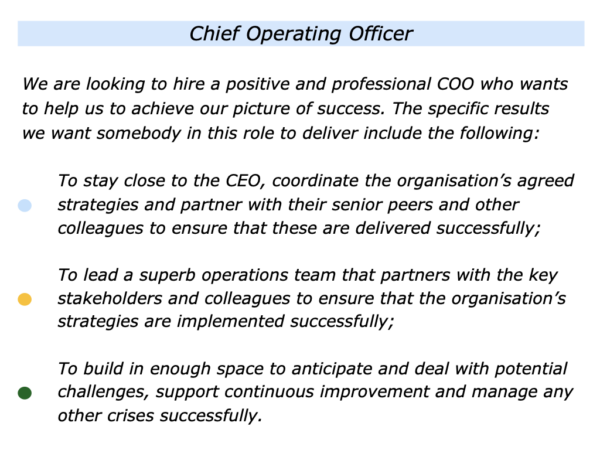
Imagine that you are ready to interview somebody for this role. You then aim:
To clarify whether the person has a successful pattern for delivering the desired results.
How to take this step? One approach is to invite them to do some prework before the interview. Here is one way to describe what you would like to them do. You can send them the following email.
The COO Role – The
Prework And Presentation
We are looking forward to seeing you at the interview for the COO role. We would like you to do some prework before the meeting. Here is an introduction to what we would like you to do.
The specific results we want somebody to
deliver in this role include the following:
To …
To …
To …
Bearing these things in mind, we would like you to present the following things during the interview.
To describe a specific situation in the past when you have delivered some of these kinds of results;
To describe the specific things you actually did then – such as the principles you followed and how you translated these into action – to deliver these results;
To describe the specific things you would do to deliver the results we want the COO to deliver for our organisation.
Let us know if you would like any information that will help you to make this presentation. You can then make this presentation in any way you wish.
Again, we look forward to seeing you at the interview.
———————
People develop rather than change. It is therefore vital to find whether a person has a successful pattern for delivering the kinds of results you want. If appropriate, you can help them build on this ability to deliver the required results for your organisation.
The Specific
Strengths Approach
Some organisations recruit people who may have specific strengths. They are therefore always on the lookout for talent and may recruit a person because either:
The person has strengths the organisation can use to fulfil a present need – such as a role to be filled – to help it achieve its picture of success;
The person has strengths the organisation may be able to use in some way – such as an associate, consultant, specialist or in a future role – to help it achieve its picture of success.
This approach is one that also involves a person doing some prework before the interview. When taking this approach, it can be useful to send the person some information about the organisation’s principles and picture of success.
The way that the person tackles the exercises can provide clues about their character. Here are the exercises. You can, of course, adapt these in your own way.
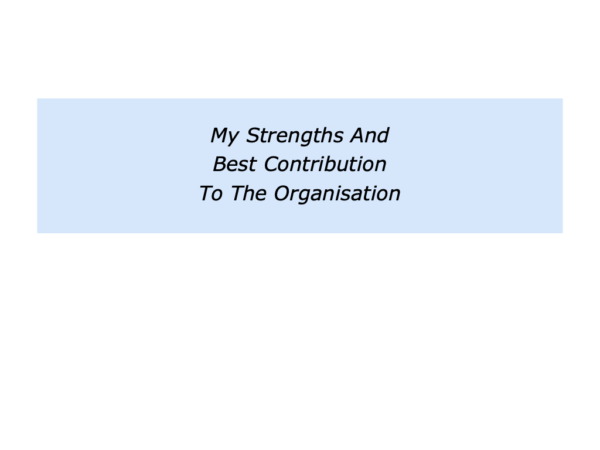
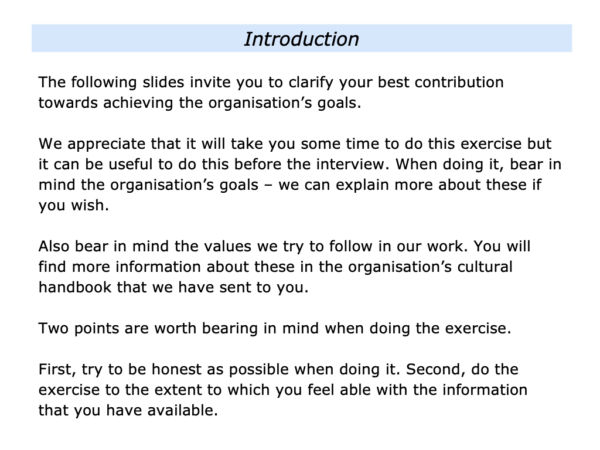
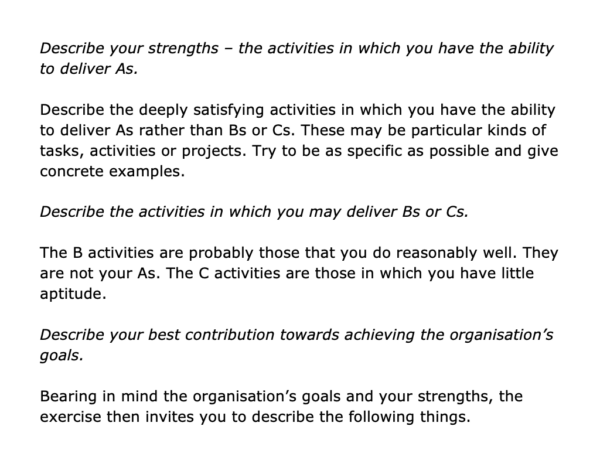
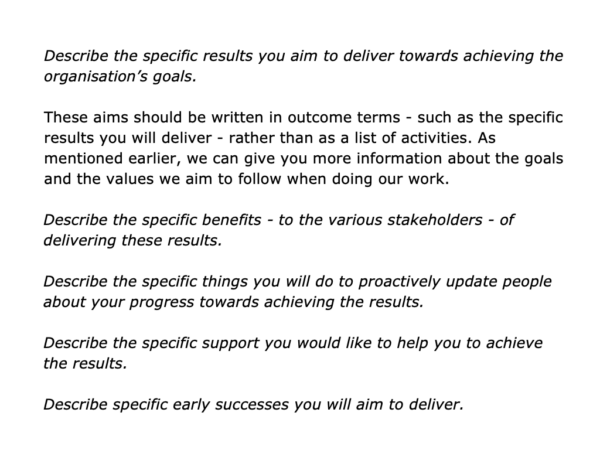
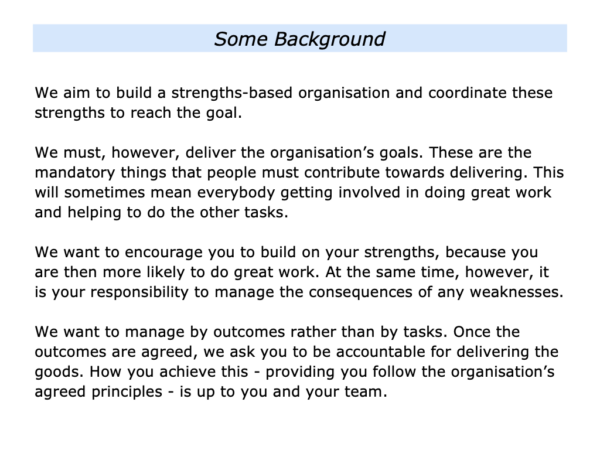
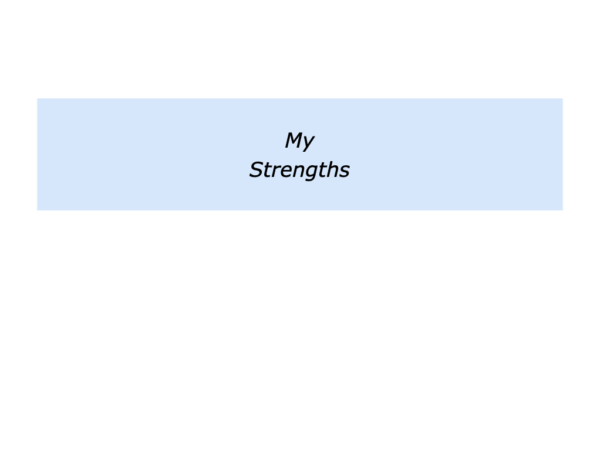
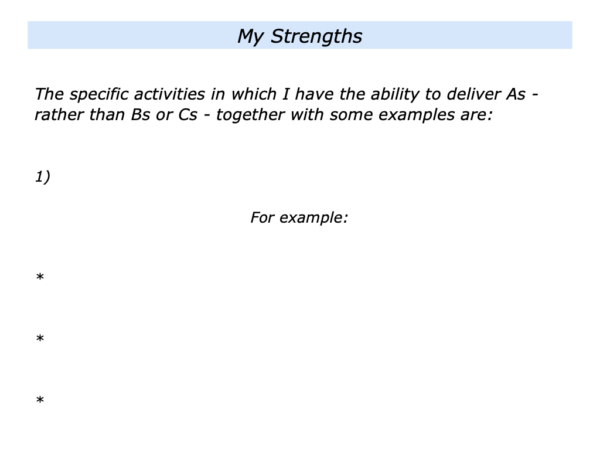


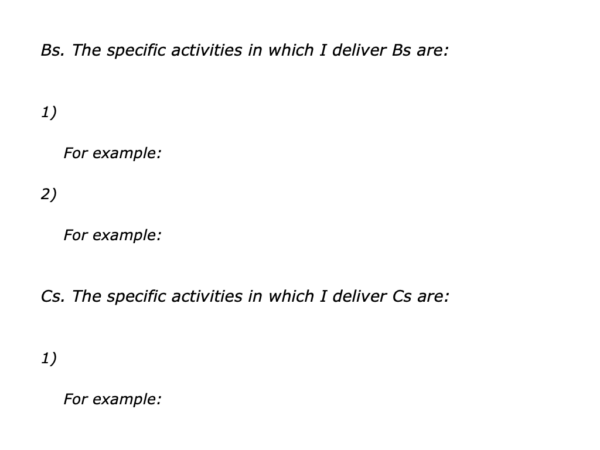
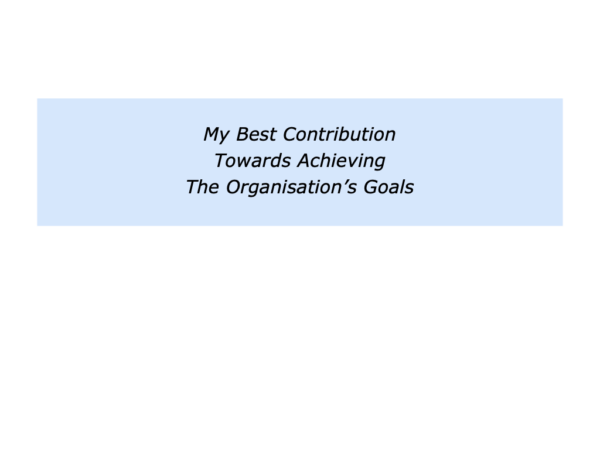
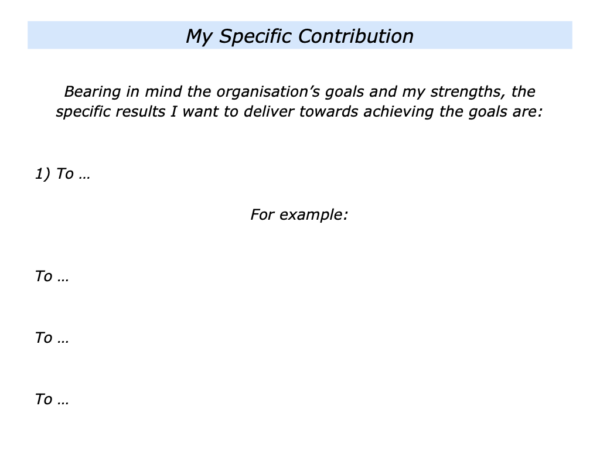


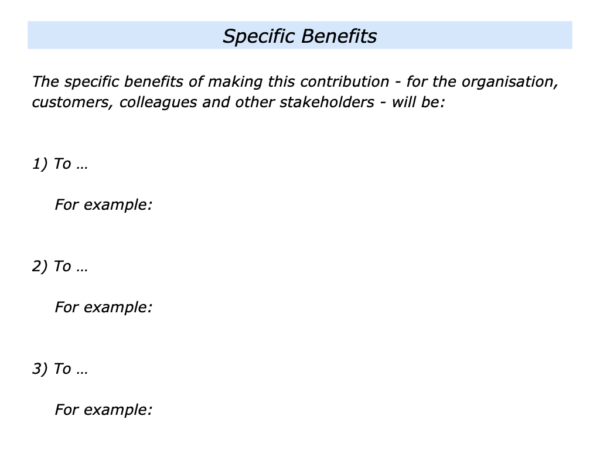
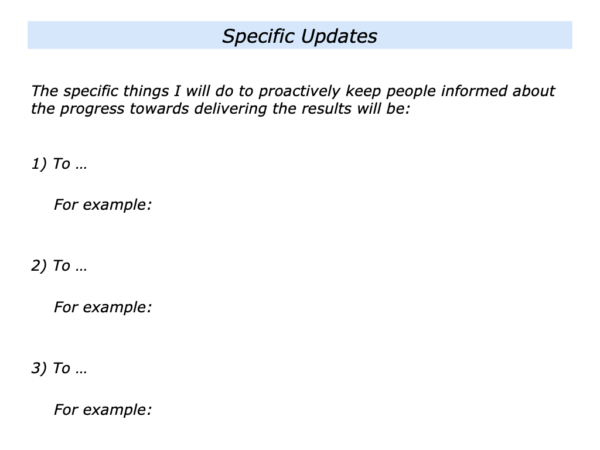
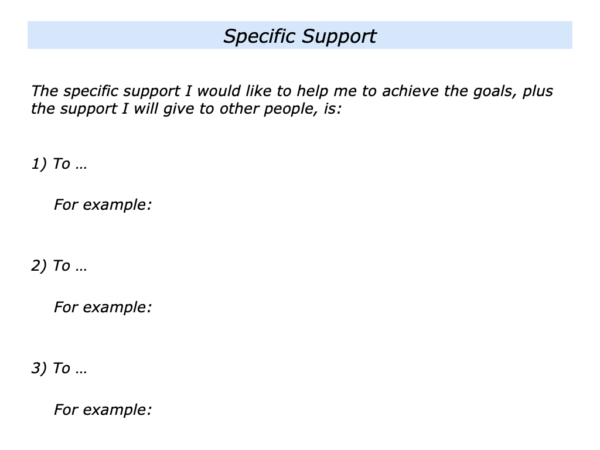
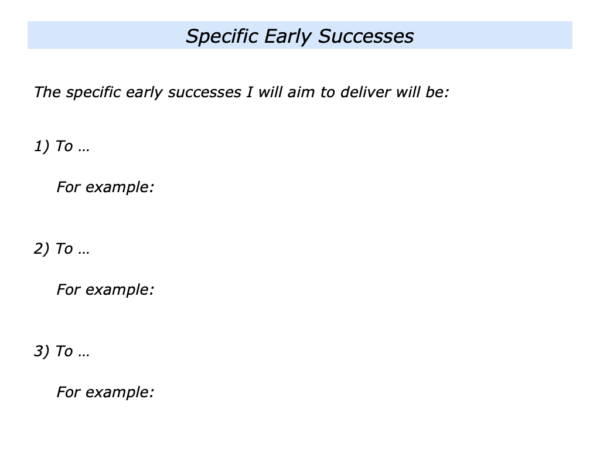
The Specific
Stakeholders Approach
This is an approach starts by describing the key stakeholders a candidate may need to satisfy and the results each of these may want them to deliver. After giving this background, it then invites the person to do the following prework.
To list the key stakeholders they want to satisfy – such as their bosses, the various customers, their colleagues and other stakeholders;
To describe the actual words they would like to hear each of these stakeholders saying after their first three months about the work they are delivering;
To describe the specific things they can do to increase the likelihood of each of these stakeholders are saying these words.
Imagine that a person is applying to lead a team that aims to provide great service to both its external and internal customers. They may then write something like the following.
The Team’s External Customers – The actual words I would
like them to be saying about the service we offer are these.
“The team really understands our business … They deliver great service that helps us to achieve our goals … They act as one-stop shop for dealing with problems … They are true partners and help us to achieve success.”
The Team’s Internal Customers – The actual words I would
like them to be saying about the service we offer are these.
“The team helps us to deliver our targets … It delivers great service to its internal customers … It is self-managing, proactive and makes a good contribution to the business.”
Here is the exercise. A person can describe what they want their stakeholders to be saying and then aim to deliver this picture of success.
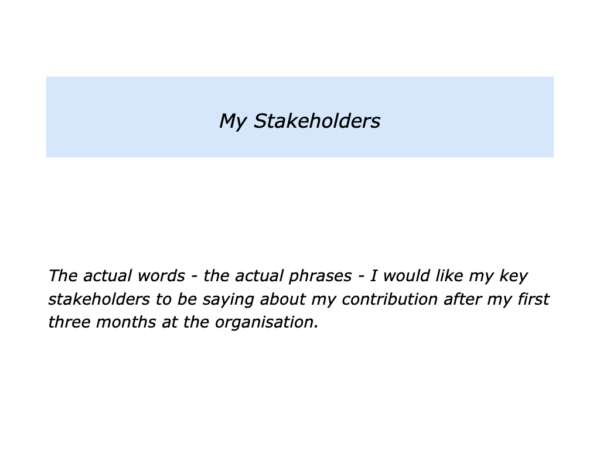
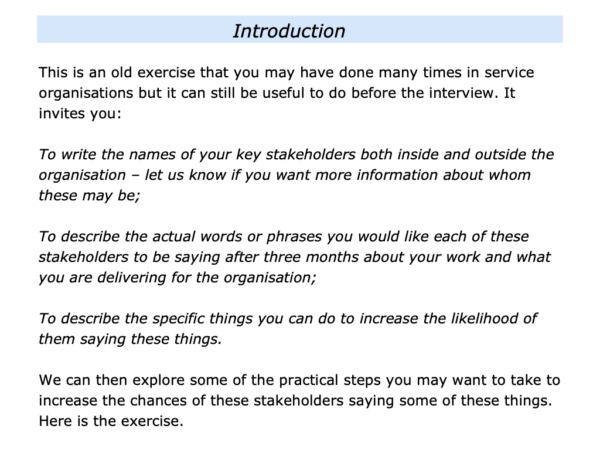
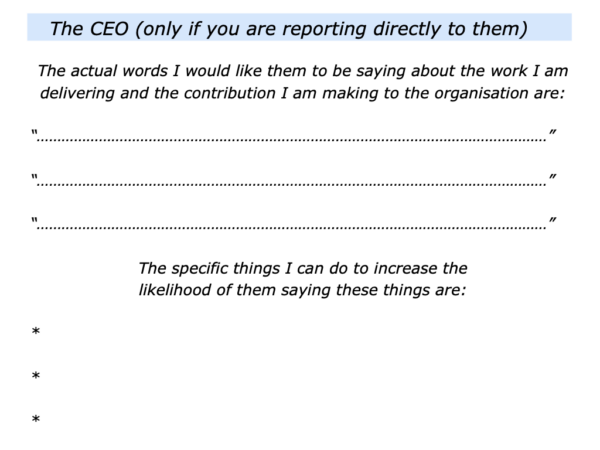
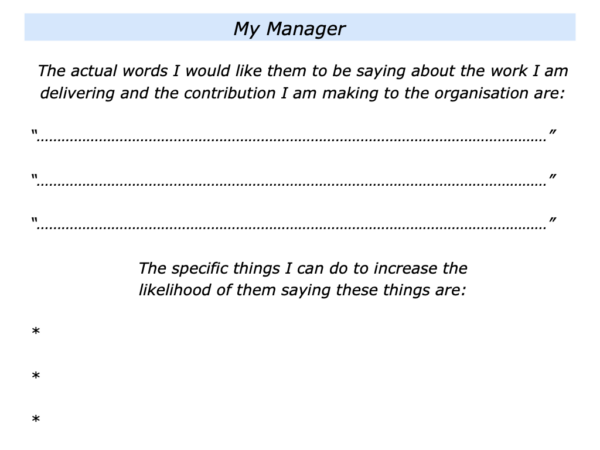
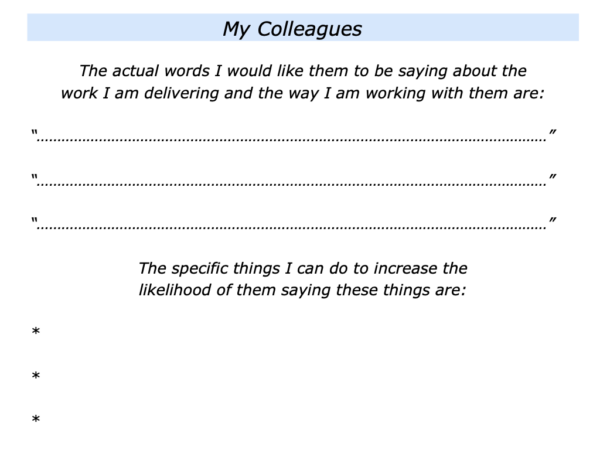
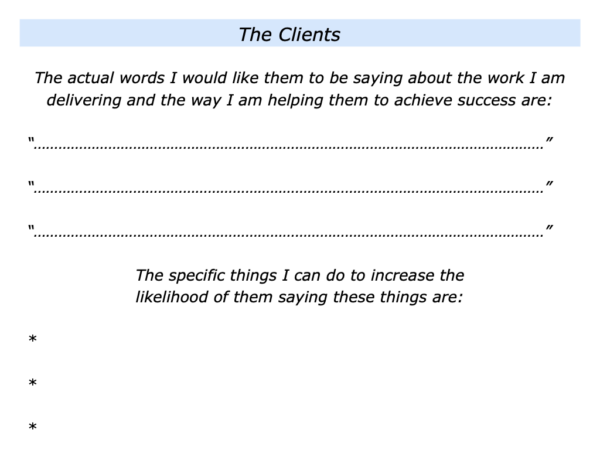
The Specific Legacy Approach
There are many model for recruiting people. You will obviously use the approach that you feel will increase the likelihood of recruiting successfully. Here is a final exercise on this theme.
People often want to pass on a positive legacy. They may want to achieve certain things or help other people. They may also want to pass knowledge or practical tools that enable people to shape a positive future.
This is an approach that can be used when interviewing a person for a role or helping them to set goals in a new job. Here is one way to introduce it to a person.
“There are many ways to set goals. One approach I would like you to explore is to look into the future and do an exercise called My Specific Legacy.
“This invites you to describe three things you want to have achieved or to have passed on by the time you move on from the role. We can then explore how to achieve these things. Here is the exercise.”
Different people write different things when doing this exercise. The HR Director of a famous company said that they wanted:
To have helped to build a strengths based company that continued to achieve ongoing success;
To have built a professional HR team that continues to implement the company’s strengths based people strategies and enables it to achieve ongoing success;
To have delivered a pioneering corporate responsibility programme that has applied the company’s strengths to partner with a social enterprise and achieve ongoing success.
Here is the exercise you can invite a person to do. If appropriate, you can then explore with them how they can aim to deliver this specific legacy.
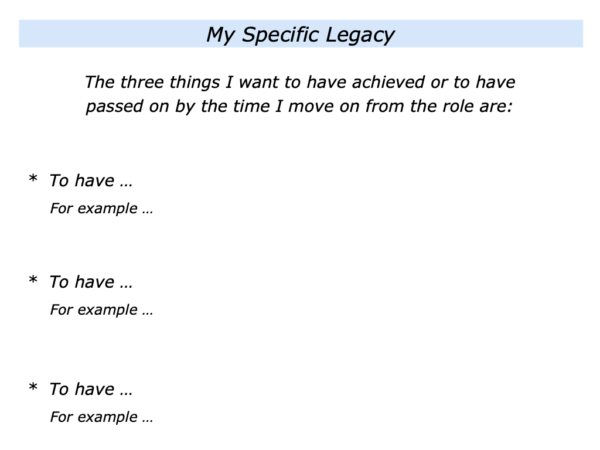


Leave a Reply